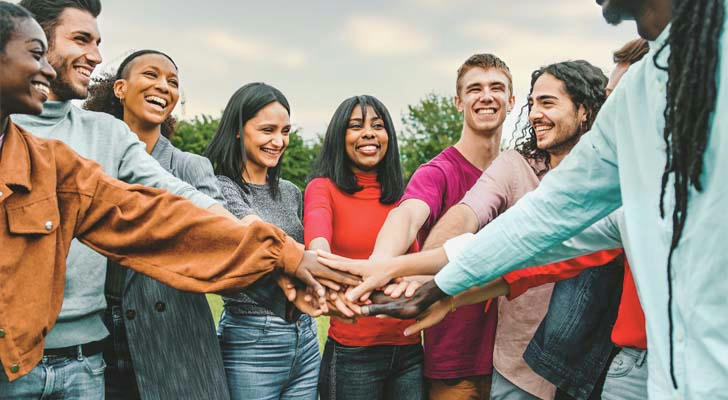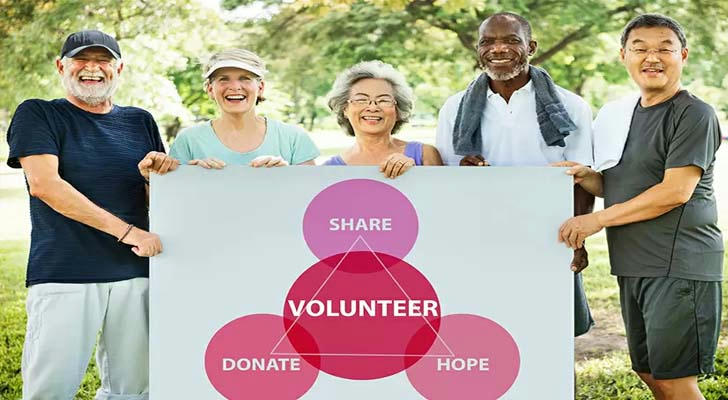Social Activities and Community Engagement: The Secret to a Happier Life
We’ve all been there: after a long, stressful week, the idea of staying in and watching Netflix seems like the perfect plan. But what if we told you that stepping outside your door and participating in social activities could actually make you feel better—both mentally and physically? Yep, it’s true! Social engagement and community involvement aren’t just fun; they’re essential to your overall well-being.
Let’s explore how being part of a community and engaging in social activities can boost your happiness, health, and sense of purpose—and maybe even change your life in the process. Don’t worry, we’ll also include a real-life case study to show you how this all works in action.

1. Why Social Activities Matter
In today’s fast-paced world, it’s easy to feel disconnected, even when we’re more "connected" than ever thanks to social media. But real, face-to-face interactions with people in your community have far more benefits than just scrolling through a feed or texting.
Here’s why social activities matter:
Improved Mental Health: Engaging in social activities can help lower stress, reduce feelings of anxiety and depression, and increase feelings of happiness. Humans are social creatures, and positive social interactions release endorphins—those feel-good hormones that improve your mood. It’s like nature’s built-in antidepressant!
Better Physical Health: Believe it or not, being social can improve your physical health, too. Studies have shown that people with strong social networks tend to have better heart health, lower blood pressure, and stronger immune systems. Plus, activities like group fitness classes or community sports teams can keep you active and energized.
Sense of Belonging: Participating in social and community activities helps foster a sense of connection, which is crucial for emotional well-being. Feeling like you’re part of something bigger than yourself can provide a strong sense of purpose and support.
So, whether it’s joining a local book club, volunteering, or even attending neighborhood block parties, making time for social activities can give you a big boost in both mental and physical health.

2. Types of Social Activities and Community Engagement
Social activities come in all shapes and sizes, so there’s something for everyone! Here are a few types of activities that you can get involved in:
Community Events and Festivals: From farmer’s markets to music festivals to holiday parades, community events are a great way to meet new people and connect with your neighbors. These events bring people together and allow you to celebrate your local culture and shared experiences.
Volunteering: Getting involved in a cause you care about can be incredibly rewarding. Whether you’re helping out at a local food bank, tutoring children, or working with animals, volunteering provides a sense of fulfillment and creates strong bonds with others in your community.
Sports and Fitness Groups: Many communities offer recreational sports leagues, like soccer, tennis, or even pickleball. These are fun ways to stay active, meet new people, and develop a sense of teamwork.
Interest-Based Clubs: Whether you’re into knitting, gaming, or gardening, there’s likely a group of like-minded individuals who share your passion. Joining a club can provide a regular outlet for fun and help you bond over shared interests.
Neighborhood Gatherings: Don’t overlook the power of simple neighborhood events—potlucks, block parties, and game nights are all opportunities to strengthen the bonds between you and your neighbors.
The key is to find activities that make you feel excited and energized, whether they’re high-energy group events or more relaxed social settings.

3. The Real-Life Case of Jane: From Isolation to Connection
Let’s take a look at Jane, a 42-year-old single mother who had recently moved to a new city. At first, Jane found herself spending most of her time at home with her kids. She missed her old friends and struggled with the isolation that came with being in a new place. Work was demanding, and between raising two young children and taking care of everything else, Jane didn’t have time to socialize or get involved in the community.
But one day, Jane decided to try something new. She saw a flyer for a community volunteer event at a local park. They were looking for people to help clean up the park and plant some new flowers. Jane figured it would be a great way to get outside and do something productive.
She went to the event with her kids, and to her surprise, not only did she enjoy the activity, but she also met a few other parents who lived nearby. One of them invited Jane to a neighborhood playdate, and soon after, Jane found herself attending a weekly fitness class at the community center.
Over time, Jane’s social circle expanded, and she became more involved in her community. She even joined a local book club that met once a month, which gave her the perfect excuse to carve out some “me” time and bond with others who shared her love of reading.
As Jane got more engaged in her community, she noticed a huge shift in her mood. Her stress levels decreased, and she felt more connected and supported. She also saw how much her kids enjoyed having playmates and how her social life began to improve, too.
Jane’s story is a great example of how getting involved in social activities—whether through volunteering, fitness, or even just casual meetups—can have a profound impact on your mental health, sense of belonging, and overall well-being.

4. Overcoming Barriers to Social Participation
While social activities and community engagement can offer huge benefits, it’s not always easy to get started. Many people face barriers such as time constraints, social anxiety, or simply not knowing where to begin. If you’re feeling hesitant, here are a few tips to overcome those challenges:
Start Small: You don’t have to jump into a huge event right away. Start with smaller activities that feel more comfortable—maybe a casual meetup or a virtual event if you’re feeling a bit shy.
Bring a Friend: If you’re nervous about going solo, invite a friend or family member to join you. Having someone familiar by your side can help ease any anxiety.
Try Online Communities: If in-person activities feel overwhelming, explore online groups and virtual events. You can find groups that align with your interests and connect with people without the pressure of face-to-face interaction.
Set Realistic Goals: Don’t feel like you have to attend every event or become super involved immediately. Start with a couple of activities per month and gradually increase your participation as you get more comfortable.
Remember, the goal is to find something that fits your schedule, feels enjoyable, and provides opportunities for connection.
5. Conclusion: The Power of Connection
Social activities and community engagement are more than just fun—they’re an essential part of a healthy, balanced life. The power of connecting with others is immense, and it can transform your mental health, happiness, and even physical well-being. Whether it’s through volunteering, fitness, or neighborhood gatherings, there’s a world of opportunities waiting for you to dive in.
So, next time you’re thinking about staying in for the evening, consider stepping outside your door and engaging with your community. You never know—those social connections could be exactly what you need to feel better and live life to the fullest. 💫🌍
